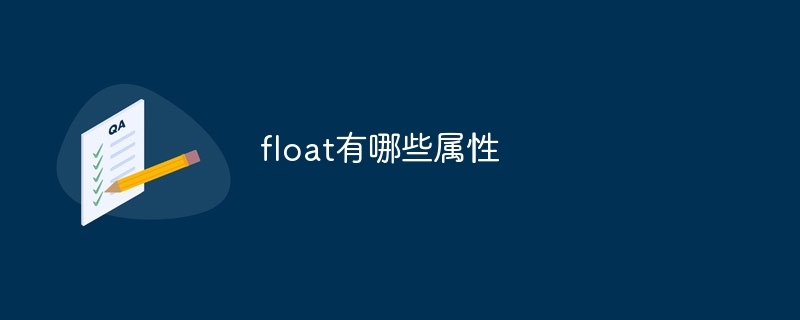
float attributes include left, right, none, inherit, etc. Detailed introduction: 1. left, making the element float to the left. When the element is set to float, it will break away from the normal document flow and move to the left until it encounters the edge of the parent element or another floating element; 2. right, Make the element float to the right. When the element is set to float, it will break away from the normal document flow and move to the right until it encounters the edge of the parent element or another floating element; 3. none, the default value, the element does not float. Will stay where it is and wait.

The operating system for this tutorial: Windows 10 system, DELL G3 computer.
The float attribute is an attribute used in CSS to control the floating of elements. It has the following attribute values:
1. left: Make the element float to the left. When an element is set to float, it breaks out of the normal document flow and moves to the left until it encounters the edge of the parent element or another floated element.
2. right: Float the element to the right. When an element is set to float, it breaks away from the normal document flow and moves to the right until it encounters the edge of the parent element or another floated element.
3. none: default value. The element does not float and will stay in place. This value is used to cancel any previous floating settings.
4. inherit: The element inherits the floating attribute of its parent element. This value causes the element to be laid out based on the parent element's float property.
In addition to the above attribute values, the float attribute also includes the following attributes:
1. float-width: defines the width of the float. This property can set the maximum and minimum width of the float, and whether the width is adjustable.
2. float-height: Define the height of floating. This property can set the maximum and minimum height of the float, and whether the height is adjustable.
3. float-clear: Define what should be cleared after floating elements. This property sets the direction in which floated elements are cleared, such as left, right, or top.
4. float-display: Define whether to display the background and border of the parent element on the floating child element. This property can be set to display or not display the background and borders.
5. float-offset: Define the floating offset. This property sets the position offset of a floated element relative to its parent element.
float-fallback: Define whether to use fallback float layout in certain situations. This property can set whether to enable fallback floating layout.
These properties provide more detailed control options, which can be selected and used as needed in actual development. It should be noted that although the float attribute is a commonly used layout control method, in modern front-end development, many other more powerful and flexible layout control methods have also appeared, such as CSS Flexbox and Grid layout. These new methods provide more layout control options to better meet the needs of modern web design.
The above is the detailed content of What properties does float have?. For more information, please follow other related articles on the PHP Chinese website!




